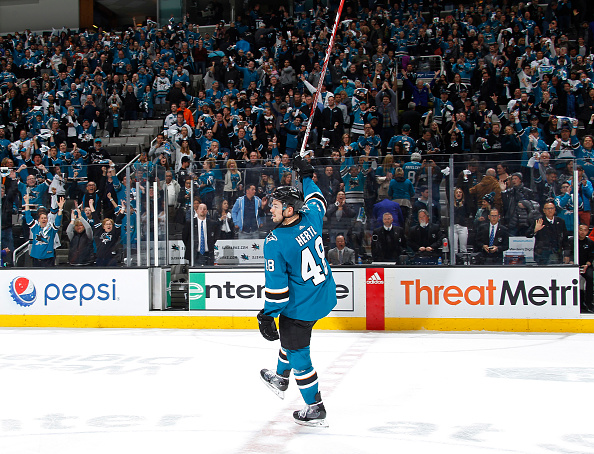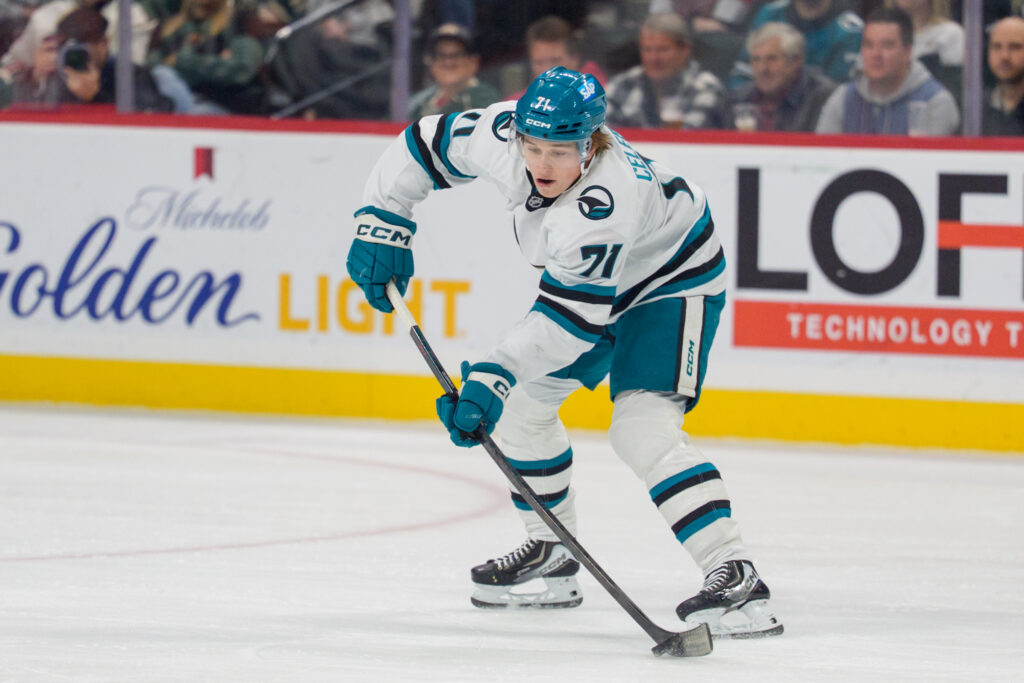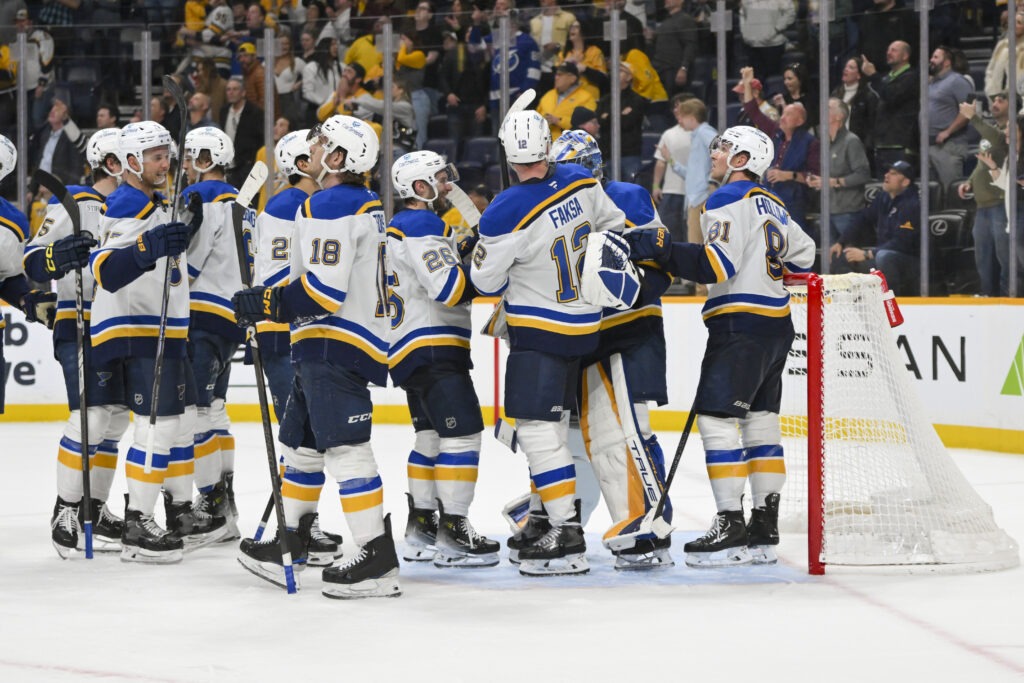When the Sharks acquired Erik Karlsson in a blockbuster trade with the Ottawa Senators, San Jose quickly became a new favourite to win not only the Pacific Division but perhaps the entire Western Conference. Throughout the years, the Sharks have become a team that is known for one thing; being a playoff let down. Though they ended up in the Stanley Cup Finals in 2016, they’ve still been unable to shake their reputation.
San Jose has only missed the playoffs twice since the 1997-98 season and is a safe bet to return for the 14th time in 15 years since the 2005 lockout. The question becomes, how far can this team actually go with one of the most talented rosters in the NHL? Expectations have become Cup or bust recently and this could be the year they finally put it all together.
Realistic San Jose Sharks Expectations for 2018/19
Expectations For The New Toy
Karlsson’s addition to the Sharks gives San Jose, at least, one of the scariest scoring defensive units in the NHL. He always finds a way to create plays in close and will begin the year on the Sharks top defensive pairing aside Marc-Edouard Vlasic. Vlasic provides a similar play style to that of one of Karlsson’s former partner Marc Methot. Methot always put the defensive part of his game first and was a great security blanket when Karlsson chose to push up the ice and play below the hash marks. However, Methot is essentially a poor mans Vlasic.
Assuming Karlsson pairs up with Vlasic for a while, the two could make their case for best defensive pairing in the NHL. They pair deadly offence and playmaking with incredible defensive awareness and puck security while being able to play off of one and others strengths. Vlasic could also finally fix Karlsson’s career-long poor plus/minus. Karlsson had his worst second worst plus/minus rating in 2018, finishing the year with a -25 rating. Vlasic hasn’t finished a season negative since he was 20 years old in 2008.
The expectation for Karlsson is that he does exactly what he has been doing with the Senators for about a decade now. The Sharks offence finished middle of the pack at 13th last season and his offensive ability should help the team get into the top-10. Karlsson joins an incredibly deep group of playmaking forwards and should once again put up another 60+ point season if he stays healthy. His defence will probably take a back seat because of his linemate but under Head Coach Pete DeBoer, Karlsson’s defensive game should also take a step forward.
Expectations for the Powerplay
With the addition of another incredibly skilled offensive defender, the Sharks are going to need to make sure their special teams are as dangerous as ever. San Jose has numerous options on the point with Karlsson, Brent Burns, and even Joe Pavelski and has still kept their forward core together that is not void of shooters. Joe Thornton seems like the likely omission from the first powerplay unit considering Pavelski’s consistency in the faceoff circle but his demotion would give the Sharks a very scary second unit.
The Powerplay was dead centre at 16th (20.6%) in the league last season and should improve in 2019. Evander Kane is set for his first full season as a Shark and was a goal-scoring machine in his first 26 games with his new club. Surprisingly, his only two powerplay goals came in the playoffs after going his first 17 regular season games without one. His role is almost certain to expand in 2019 and if he doesn’t run with it, Thornton will take back his spot on the top unit. In 2018, Thornton had 18 powerplay points in the 47 games before his injury and had the Sharks humming at a 22.9% efficiency. That number would slip to 16.5% without the 38-year-old.
There are no excuses for the powerplay any more. If someone struggles, the Sharks have six elite players that can mix and match to become maybe the best powerplay unit in the NHL. The powerplay should be a huge strength for San Jose this year.
Expectations for the Bottom-Six
The Karlsson trade may have injected a huge dose of scoring into the lineup but it also weakened the bottom half of their team. In the trade, the Sharks lost third-line mainstay Chris Tierney and are replacing him with Jyp HT Jyvaskyla standout, Antti Suomela from the Finnish Elite League. He is only 24 but plays a very different game than that of Tierney. Suomela did lead the SM-Liiga in scoring in 2018 but there is no guarantee that his production translates well to the NHL.
Tierney lead Sharks forwards who played more than 20 games in penalty killing time in 2018. Filling that checking and penalty killing line hole be one of either Rourke Chartier or Dylan Gambrell. Chartier has a history of concussions so it may be hard to hold down a full-time role but has pulled ahead in the race for the role of the fourth-line centre during the preseason. Gambrell is the more well-rounded of the two. Both are more offensive minded players than the man they are trying to replace in Eric Fehr, and are going to need to learn how to penalty kill in the NHL if they want to establish themselves on the Sharks roster. San Jose’s penalty kill was one of their biggest strengths in 2018 as they finished second in the NHL with an 84.8 PK%.
The bottom-six is looking like the biggest weakness for the Sharks as of now. They do have pieces on the wings that will provide good depth scoring but there is little in the area of defence.
Expectations for Martin Jones
Since coming to San Jose, Jones has never proved to be a goalie that can consistently play at an elite level all year. He will have patches where he is great and patches where he becomes a bit careless. Now entering his fourth year as a Shark, it is time for Jones to play the best hockey of his career. It is the first year of the six-year(s)/$ 34,500,000 contract he signed last July and Sharks management will be expecting big things from the netminder.
San Jose did a good job at keeping the puck away from Jones last season finishing 6th in shots allowed per game. Jones’ problem has been improving as a goalie despite the low shot totals against him. His SV% has stayed consistent since his first three years as a Shark but has never cracked .920. Jones’ goals against on the other hand have risen steadily each year — from 2.27 in 2016 to 2.55 in 2018. With how good the Sharks offence is expected to be next season, Jones must win more games as well as improve his individual stats. His win totals have dropped every year since 2015-16.
2019 is going to be a big ‘prove it’ year for Jones and he must improve on his performance from last season. Expect Jones’ to have a big year in net and if not, Aaron Dell could be given a lot more opportunities to get the wins the Sharks expect out of Jones.
Final Standings Expectations
At this point, the Sharks should be the team to beat in the Pacific Division. The Ducks have proven time and time again that they play their worst hockey at the beginning of a season and the only thing the King’s did to improve was adding the 35-year-old Ilya Kovalchuk — who hasn’t played in the NHL in five seasons. The Knights and Flames could both challenge the Sharks at the top of the division but both teams are significantly less talented front-to-back.
The Sharks currently have three defensemen that finished in the top-12 in Norris voting in 2018 and an offence that has not wilted in about 15 years.
Every year the Sharks window appears to be closing and every year they keep it open for another season. With the way San Jose has essentially gutted their farm system through trades, they are 100% in win-now mode. The East is clearly the more top-heavy conference and the Sharks should pounce while they still can.
In my opinion, this is the most talented Sharks team since 2010-11 when they had seven players post 50+ points and made it all the way to the Western Conference Final.
Division Prediction: 1st in the Pacific
Playoff Prediction: Western Conference Finalist
Image Credit:
Embed from Getty Images



